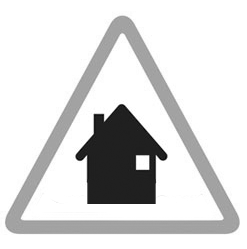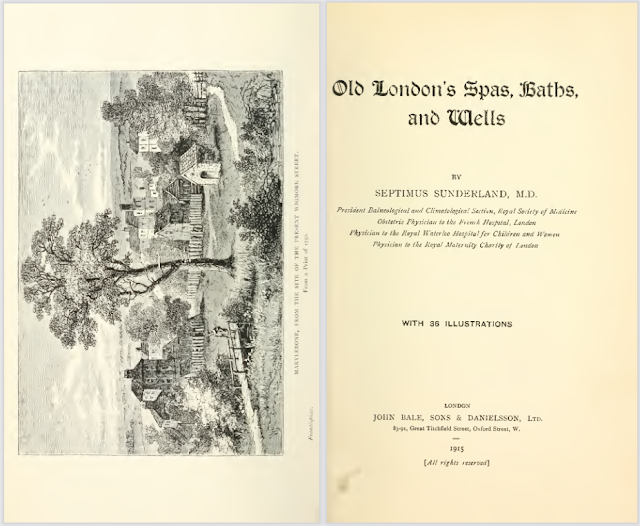
Pymmes Brook from Bowes Park to Edmonton
No current or recent warnings.
Flood Warning Area Details
The Pymmes Brook from Bowes Park to Edmonton
Region: London
Counties covered: Enfield, Greater London
Watercourses covered: Pymmes Brook
Note: the area shown on the map is the area covered by flood alerts and warnings. It is not a live map of current flooding. The area covered broadly equates to the area where the risk of flooding in any year is greater than 1% (the "hundred year" flood risk).
Other Nearby Flood Warning Locations

Lower Lee tributaries
The
Lower Lee tributaries, including the Nazeing Brook, Ching Brook,
Cobbins Brook, Pymmes Brook, Rags Brook, Salmons Brook, Turkey Brook,
Trinity Marsh Ditch and the Small River Lee
No current or recent warnings.

Salmons Brook at Grange Park and Lower Edmonton
The Salmons Brook at Grange Park and Lower Edmonton including World's End
No current or recent warnings.

Pymmes Brook at Upper Edmonton and Tottenham
The Pymmes Brook at Upper Edmonton and Tottenham
No current or recent warnings.

Pymmes Brook at East Barnet
The Pymmes Brook at East Barnet including Cockfosters and New Southgate
No current or recent warnings.

Lower River Lee at Enfield
The Lower River Lee at Enfield including Edmonton and Tottenham
No current or recent warnings.

Ching Brook in the London Borough of Waltham Forest
The Ching Brook in the London Borough of Waltham Forest, including Highams Park
No current or recent warnings.
Muswell Stream
This article relies largely or entirely on a single source. (April 2021) |
The Muswell Stream is a watercourse in the London Borough of Haringey.[1] It originates in Muswell Hill from three source rivers. The largest of the springs is now under a private home on Muswell Road. In the 12th century, the spring was on land that belonged to the Bishop of London and was used as farmland. Healing powers were attributed to this source and it was therefore consecrated to the Virgin Maria and a chapel built in its place for the pilgrimage to take place. According to tradition, Scottish king Malcolm IV is said to have been healed by the water of the spring.
In 1875 one of the issues was diverted to a lake in Alexandra Park. The part of the park in question was sold in 1899, the lake drained and the watercourse moved underground to build Grove Avenue and Rosebery Road.
The Wood Green and Hornsey laundry used water from the Muswell Stream in the 1890s.
The watercourse was completely submerged in the 1920s and 1930s. Underground water reservoirs should not always successfully ensure that the watercourse absorbs large amounts of precipitation from its catchment area. The mouth of the Muswell Stream in the Pymmes Brook is the last visible part of the watercourse.
References
London's Lost Rivers (2011) Paul Talling, Random House, pp148-150
ISBN 9781847945976
Just south of central Palmers Green, as Green Lanes approaches the North Circular, are two bridges, the first crossing the New River (Kings Arms Bridge), and the second crossing Pymmes Brook, and going by the name Deadman’s Bridge.
Why it is called that we do not seem to know, but the name appears to be ancient. A History of the County of Middlesex vol 5 (www/british-history.ac.uk) states that in the sixteenth century Green Lanes was a collection of linked roads, one of them being Deadman’s Hill in Palmers Green. In 1789 they find a reference to “Bowes Farm Bridge, presumably Deadman’s bridge in Green Lanes” where “a single arch, was built…by the road trustees and repaired in 1822 by the county”. Presumably the 1789 bridge replaced an earlier structure, (given that Pymmes Brook always needed to be traversed by those heading north). Presumably too the present bridge is in part or wholly another post 1822 incarnation. Does anyone know?
Another mystery is what occasioned the warning to traction engines and carriages which is posted on the bridge on a metal plaque (the wording is slightly unclear – the decifering below is by photographer Fin Fahey)
‘COUNTY OF MIDDLESEX / TAKE NOTICE that this Bridge / which is a County Bridge is insufficient to carry / weights beyond the [ordinary?] traffic of the / District and that the owners and persons in / charge of LOCOMOTIVE TRACTION ENGINES / and heavily laden CARRIAGES are warned / against using the Bridge for the passage of / any such Engines or Carriages / Richd. Nicholson / Clerk of the Peace.’
But the story of the southernmost bridge is harder to understand; the origin of the name seems lost in unrecorded history. It has been called Deadman’s Bridge for a long time. In one source the History of the County of Middlesex vol 5 “The Green Lanes” are recorded as a sequence of separate but linked road ways, although they took a more meandering route than the current north to south thoroughfare. From the sixteenth century the name Deadman’s Hill is associated with the stretch of road leading from the current North Circular up to Palmers Green triangle.
The National Archives list two contracts for repair of a “Bowes Farm Bridge, in Green Lanes” one in 1834 with the work carried out by Tottenham builder Michael Catling for £198 the second, in March 1884, looks promising as the contract was drawn up by Richard Nicholson - the man named on the metal Middlesex County Council sign in the photograph suggests that this is the same structure. Middlesex County Council, the local authority of its time, took on responsibility for maintaining transport infrastructure from the local parishes at a time of growing urbanisation – increasingly as local manor house and farm estates were broken up to provide housing.
So this may have been our bridge, however I wonder if there may have been confusion with a different bridge, further south where the Muswell stream once crossed Green Lanes, at about the point where Lascotts Road joins the High Road (The Muswell Stream is now now diverted via a culvert). This would place it more squarely within the lands of Bowes Manor Farm. The Recorder – Southgate's local paper from the early years of the last century has a few references to"Pymmes Brook Bridge" and the “County Bridge” – but no mention of Deadmans Bridge.
The earliest recorded reference to Muswe
ll
Hill dates back to the mid-twelve century when the Bishop of London,
who was the Lord of
the Manor of Hornsey, granted some 65 acres to an order of nuns
recently established in Clerkenwell. Situated on the east side of Colney
Hatch Lane, this land contained a natural
spring or well. John Norden, the Tudor Historian described how a
King of the Scots was
cured of a disease by taking the waters of this well, and in
medieval times this well was
to become a place of pilgrimage. The nuns built a chapel near it,
"bearing the name
of our Ladie of Muswell", and Muswell Hill became the name of the
district in place
of an earlier name. The chapel was to disappear with the dissolution
of religious houses
by Henry VIII, but administration of the land was to remain with
Clerkenwell parish until
1900, and was known as "Clerkenwell Detached".
Albert Close
Muswell Stream To the rear is a tree lined
bank which is evidence of the stream
Albert Road
The Muswell Stream flowed north along the
western part of the road and was met by a number of tributaries. It flooded the
area frequently until drainage was installed in the park.
Recreation Ground. Some of the remains of the fields of Tottenham
Wood Farm and it. It was opened 1893 land of Alexandra Park Company land and
lies at the base of two hills. It includes the Pavilion Cafe.
The Muswell Stream flowed across the
recreation ground.
Albert Works. In the 1880s this was the Wood
Green and Hornsey Steam Laundry but later produced piano parts and like
objects. In the Second Wrold War aeroplane parts were made here. In 1952 it was
a tile works and later a packing company,
Crescent
Rise
The
Muswell Stream flows under the road.
Railway
embankment – there is an inspection hatch for the stream on this.
Donovan Avenue
14 & 15 Boundary marker at ground level "1934 BH" indicates the
boundary between the Boroughs of Hornsey and Wood Green, both created in 1933.
This boundary line is also that of the more ancient parishes of Tottenham and
Hornsey back to the Saxons. Note the line in paving stones outside 14.
Durnsford Road
Dip which shows the line of the Muswell
Stream
Grove Avenue
Built on the site of three lakes which were
inside the park
The Muswell Stream crosses the northern end
of the road from Rosebery Avenue where it joins another stream
A stream ran between this road and Roseberry
Avenue to join the Muswell Stream. This stream was used for a string of
ornamental lakes in the park when the Palace opened for the second time in
1875. The area was sold off for building in 1899
Over
bridge on the railway.
Railway Line
Bridge – the line between Alexandra Palace and Bowes Park
curves out of the station and the down crosses the main line on a three span plate
girder bridge. The up line came down on the eastern side of the station.
A short section of the Muswell Stream
remains open between the main line and the Hertford loop tracks.















One reply on “The mystery of Deadman’s Bridge”Suzanne Beardsays:
see also a wonderful new article on Bowes and Bounds Green Connected http://www.bowesandbounds.org/profiles/blogs/solving-the-puzzle-of-deadman-s-bridge